On the occasion of my visit to the collection of retro computers HistoryBit, I had the pleasure of meeting Davide Fornasiero, together with his brother Alberto Fornasiero. Davide has always been passionate about vintage technology. He made this documentary, which describes the evolution of calculation, the history of the computer, starting from the sumerian tables and the abacus.

This is the first episode of Davide Fornasiero's documentary on the history of the computer, which starts from the abacus and reaches the electromechanical computers of the late '800.
0/1 A code along millennia
Contemporary man is accustomed, by now, to use superfast computers with natural familiarity, to surf the net, to communicate with Blogs and the Web.
Who does not feel the desire to turn the clock of history back centuries, if not millennia, making the path taken by man from the beginning re-emerge from oblivion?
Let's start with some primordial form of calculation, simply by counting on your fingers. Then, we pass through the tablets of the Sumerians, from the abacus and gradually arriving up to modern evolution. The genesis of this journey, the history of the computer, takes on such an interest that the chronicle becomes a novel and research becomes passion. And it is from this kaleidoscope of notes, images, characters, that this work takes shape and movement. Not only do we want to describe the technique, but also the humanity of its protagonists.

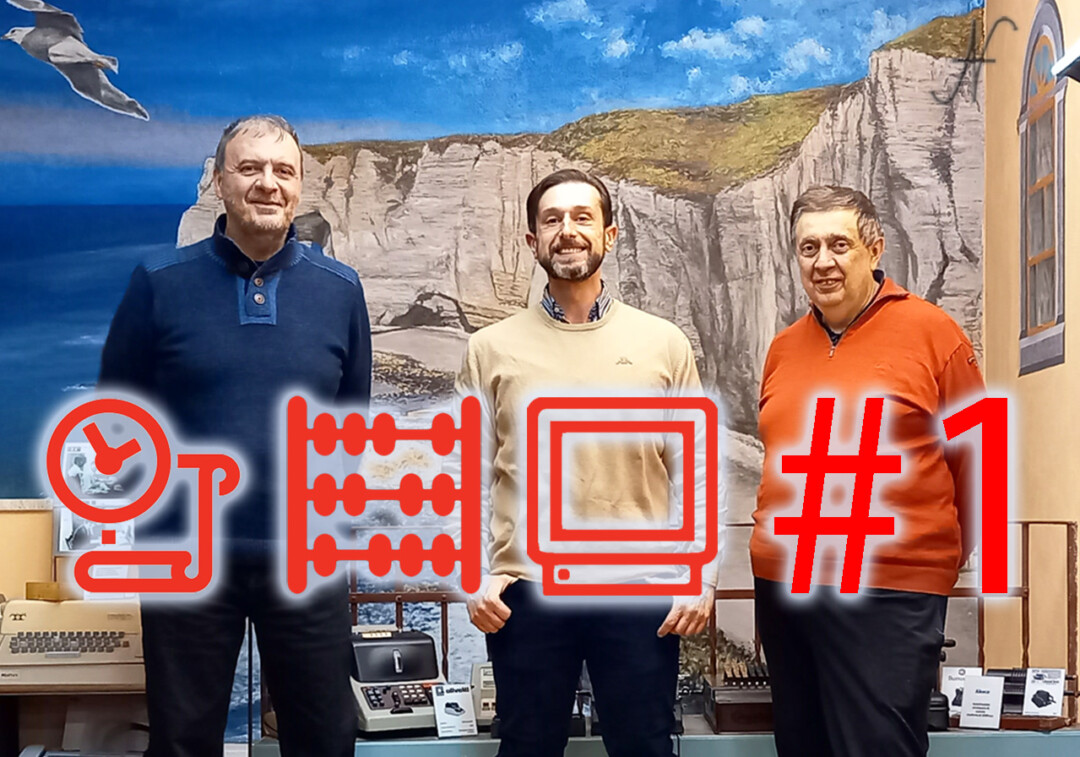
The pioneers of calculation
Philosophers, mathematicians, scientists have delved into the world of numbers, feeling the need to mechanize mathematical calculation. The beginning of this journey in the history of the computer makes us go back to about 450 a.C. to find the first of the numerical calculators: The Abacus. This interesting instrument seems to have found favor with many peoples so as to be gradually modified according to the needs of each individual culture. It is not known which people invented this simple, but effective, calculating machine. Perhaps the Babylonians, but we also find different interpretations of the Abacus among the Maya, the Aztecs, the Egyptians, the Chinese, and even among the Romans. The word “abacus” comes from the Semitic “abaq”, which means “dust”, “sand”. In fact, the oldest abacuses were tables covered with a thin layer of sand on which calculations were marked with a stylus.
But, despite the various evolutions, the structure of the Abaco is always the same, and consists of a wooden frame equipped with a series of vertical columns on which a certain number of balls can flow freely. A horizontal element, also made of wood, divides the frame into two parts: an upper and a lower one. Each ball of the upper section is worth five, while those of the lower section are worth one. Each ball is counted when it is moved towards the element of separation between the two sections of the Abacus. The rightmost column is that of the units, the adjacent one to the left is that of the dozens, and so on.
Even today, an operator who is familiar with the Abaco can maneuver the balls on the rods with enormous calculation speed. In 1946, a contest took place between an American soldier, Thomas Nathan Wood, and the employee of the Savings Office of the Japanese Ministry of Postal Administration Kiyoshi Matsuzaki. The two had to solve some arithmetic problems. The soldier had a manually operated electric calculator, while Matsuzaki had the Abacus. Matsuzaki always won!
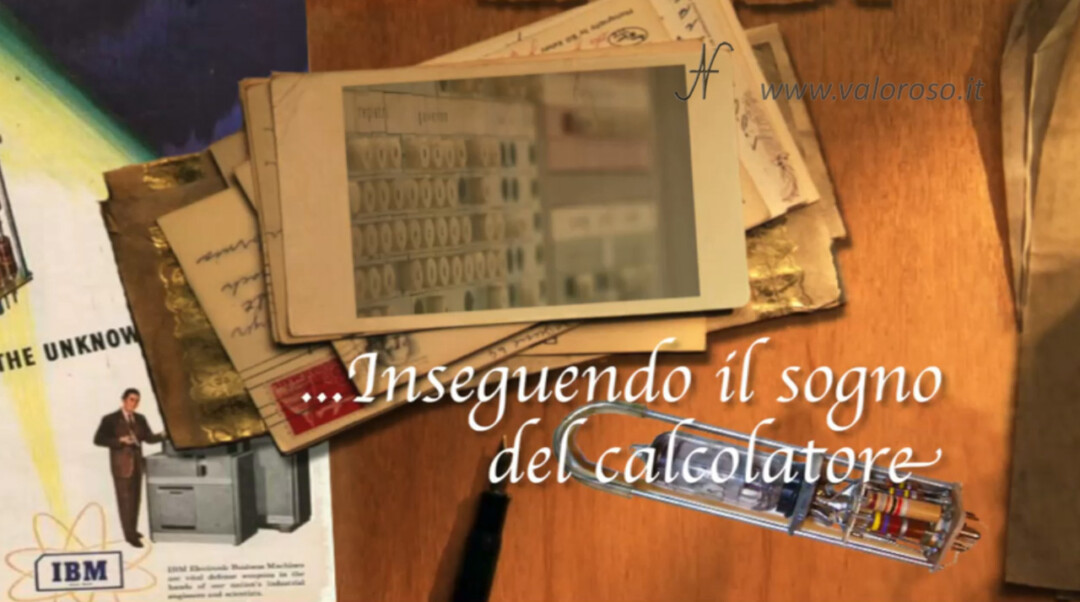
History of the computer, the need for automatic calculation
So wrote the German philosopher and mathematician Leibniz:

"It is not worthy of excellent men to waste hours as slaves to make calculations that could easily be entrusted to someone else if machines were used"
Leibniz's statement reflects how much the need to mechanize mathematical calculation was felt in the seventeenth century. Those were years characterized by intense mathematical, engineering and scientific work that involved calculations and stimulated the use of new algorithms.
So it was in 1600, for example, that Nepero invented a mathematical function now familiar to every student: The "Logarithm". Although it was not the invention of a calculating machine, it was nevertheless a formidable practical contribution on the road to the automation of complex calculations.
Even the trigonometric functions required to be calculated or perfected, since their use was made necessary by the development of maritime navigation, astronomical studies, and topographic surveys. In 1900, near Antikithera, a small island located between Greece and the island of Crete, a sponge fisherman found the wreck of a Greek ship.

From the dives that followed, artifacts of considerable value were brought to light, including a strange artifact apparently of stone. Once cleaned of the incrustations it actually concealed one of the most interesting and mysterious devices of antiquity called "Antikithera mechanism", and traced back between 150 and 100 a.C.
It was used for astronomical calculation thus allowing to calculate the position of the sun and the moon at a certain time of the year. He also calculated eclipses and positions of other planets. With its 23 precision gears, this instrument has been unmatched for centuries. Before man could produce something like this, more than 1000 years had to pass. It is not known where antikithera's mechanism was built. Very recent studies tell us that, most likely, he was originally from Syracuse where Archimedes lived, whose mechanical planetarium was also mentioned by Cicero. Unfortunately, no trace of Archimedes' work has remained.
Computer history, experiments and attempts
Leonardo da Vinci
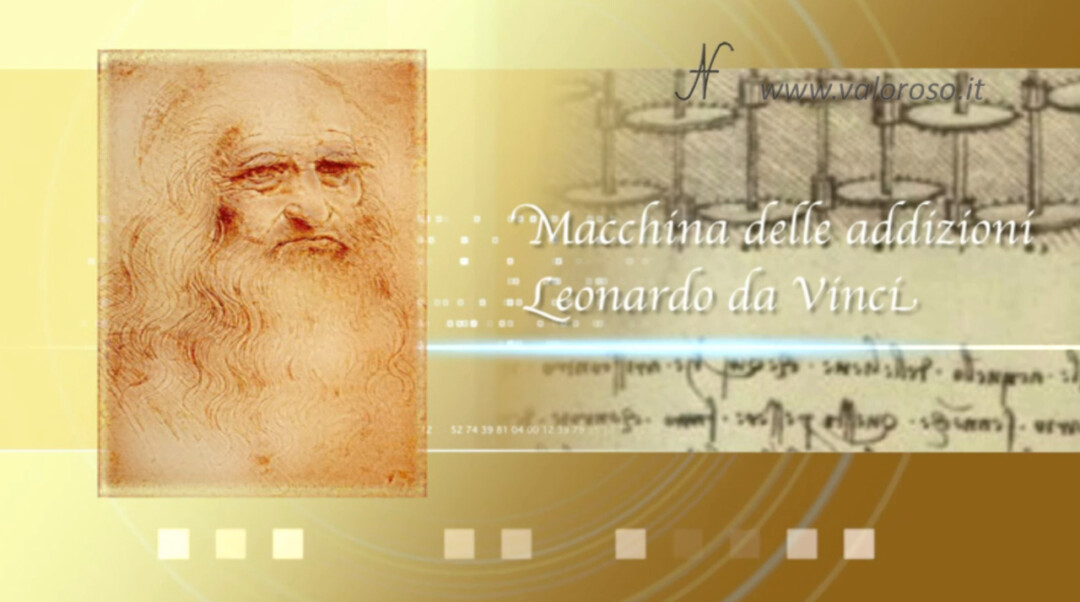
On February 13, 1967, American researchers made an incredible discovery in the National Library of Spain: They found two unknown works by Leonardo da Vinci, today known as the "Madrid Codex". It depicted a strange device with gears, conceived, perhaps, to make calculations with the decimal system. The machine designed by Leonardo was based on a series of cogwheels. It should have allowed to perform the operations of addition and subtraction, but, mechanical friction heavily conditioned the operation of a possible prototype.
Blaise Pascal
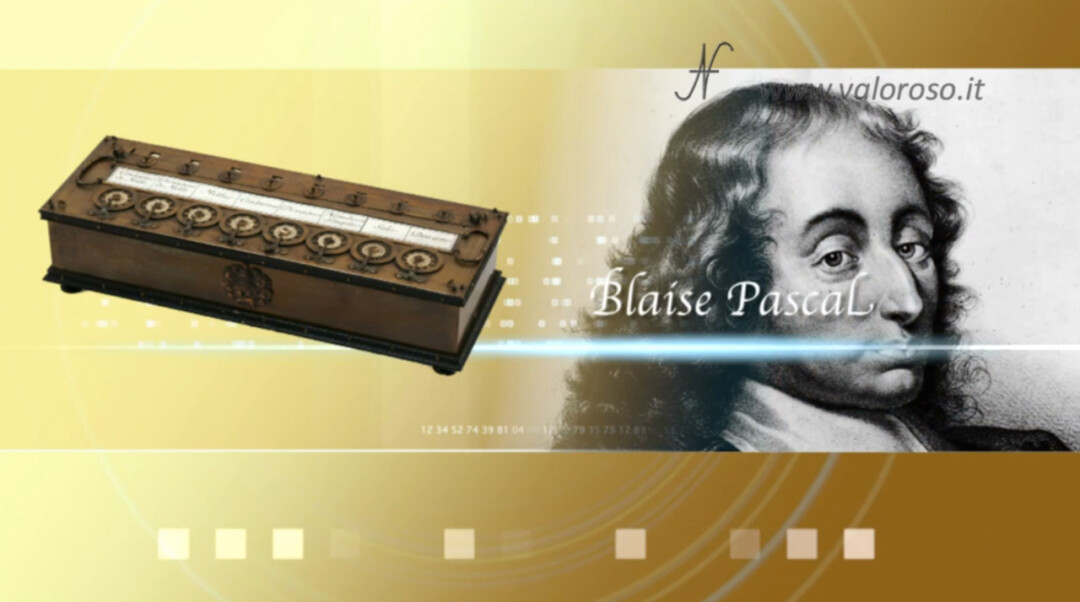
From here begins the path of the pioneers who began the long journey that was to lead to the current computers.
The first mechanical calculating machine saw the light in 1623, by Wilhelm Schickard, and was able to perform the four basic operations. It was unfortunately destroyed during the Thirty Years' War. It was then in 1642 that the philosopher French Blaise Pascal, who wanted to facilitate the work of his father inspector of taxes realized, without knowing the work of Schickard, a similar machine capable of making only additions and subtractions.
This machine was called "La Pascaline", in Italian "Pascaline". It was composed of a series of cogwheels indicating the units, tens, hundreds and so on, and each was divided into ten sectors from 0 to 9. Its operation was quite simple: To perform the sum 9 + 3, you set the wheel of the units to 9 and advanced it 3 positions. Thus a 2 was obtained on the wheel of the units and another 1 on the wheel of the tens that was automatically rotated by some gears, providing the number 12 result of the operation. He therefore operated in a rudimentary manner; however, it applied a fundamental principle of mechanical calculation: the "automatic carry-over". Even today it is the principle that regulates the operation of the odometer of cars.
Gottfried Leibniz
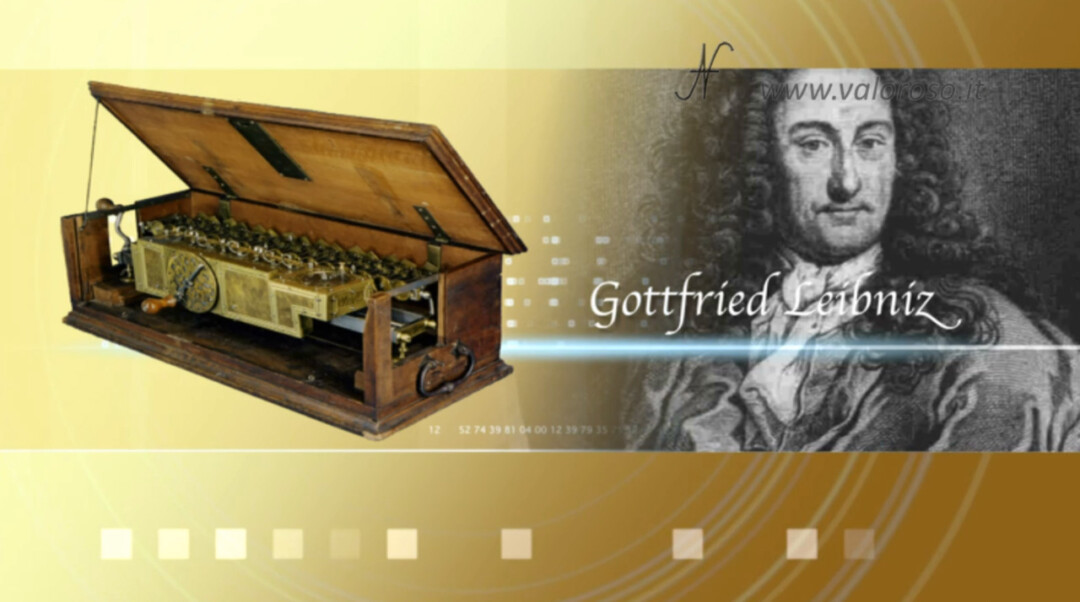
Gottfried Leibniz, a German philosopher and mathematician, designed a calculating machine more advanced than Pascal's. It was 1664. His contribution to the history of calculation is fundamental. To Him we owe the discovery of the binary numbering system on which the operation of all modern computers is based. He showed that with the binary system the execution of multiplication takes place through addition and in 1683 he conceived a multiplier machine based on this principle. The binary numbering system is mentioned by Leibniz in his manuscript dated March 15, 1679. In it is reproduced a medal designed by him that, curiously, connects binary numbering to theology. At the top was written:
"One created everything from nothing", and below "One is necessary."
Gottfried Leibniz certainly could not predict that binary numbering would be essential for the realization of computers, but the ease with which it is possible to represent a 1 or a 0 in electronics has made the choice of this system almost automatic. In Leibniz's machine, what was called the "Leibniz wheel" was used, which stored the result of an operation in a totalizer register that gradually "accumulates" the result up to its total value. This mechanism made it possible to perform multiplication according to the simple but long-winded principle of repeated addition. 4 x 3 = 12, is calculated as 4 + 4 + 4 = 12. The principle used by Leibniz was in turn taken up and improved in 1820 by the French Charles Xavier de Colmar in his "arithmometer".
At first glance, the mechanism of Pascal and Leibniz is related to the mechanisms of watchmaking. The clock mechanism is connected in two ways to the history of the computer. On the one hand, the computer is a cybernetic machine. Cybernetics has its ancestors in the automata of past centuries, while the other point where history intersects with that of the computer, concerns technological evolution. The construction of monumental clocks, with automata or with increasingly complex astronomical instruments and, at the same time, of increasingly smaller and more precise portable clocks, brings precision mechanics to a very high level. Watchmaking, therefore, having reached the peak of its development, thus leaves a precious technological legacy to the emerging discipline of automatic calculation.
Giovanni Poleni
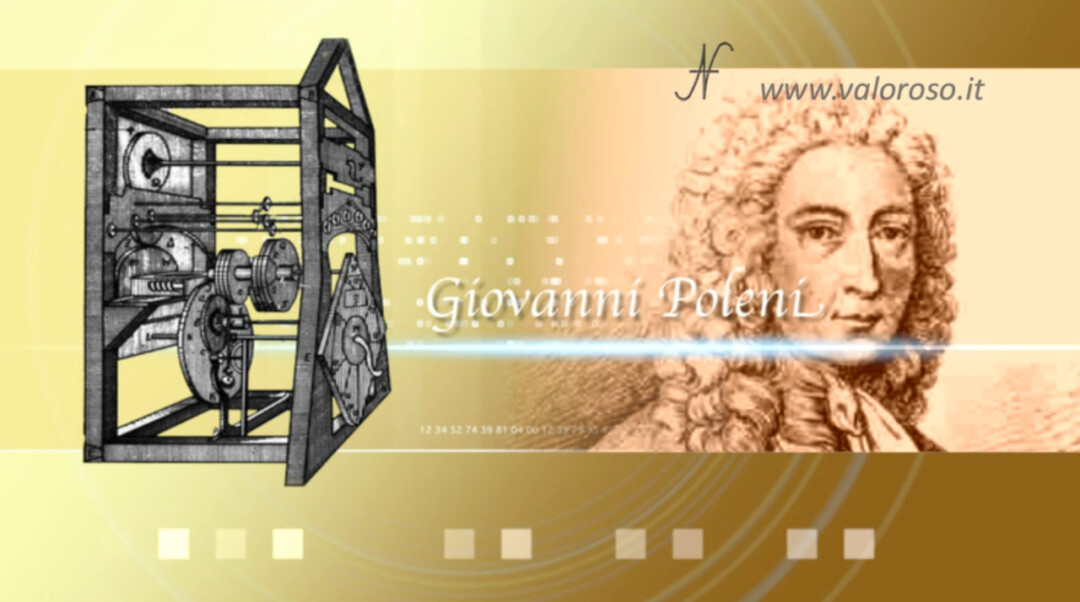
Giovanni Poleni, Venetian Marquis, scientist and professor at the University of Padua, is credited with the creation of the first mechanical calculator invented and manufactured in Italy. The story of the computer continues. Poleni had the idea of exploiting, as an "engine", a weight similar to that used in pendulum clocks. It was a weight tied to a rope wrapped on an axis. As he descended, he rotated the axis and then gave movement to the whole calculator.
Operation.
The core of the machine is represented by the "transposer", a wheel equipped with raiseable teeth that interacts with small gears with ten fixed teeth, called accumulators. So, to set the digits on the transposer you have to activate, raising them, the teeth equivalent to the number to be processed. At each rotation the accumulators advance according to the raised teeth on the transposer. Each complete turn of an accumulator (ten teeth, equivalent to ten units), automatically advances a tooth of the next accumulator, thus carrying out the carryover operation. A front dial numbered from one to nine allows you to set the multiplier by inserting a peg that stops the machine after the desired number of rotations. The result is then displayed in small windows that show as many numbered discs fixed to the axes of the accumulators.
This first example was in fact a complete machine that could have given great results if it had not had a great defect. They were mechanical devices and as such required to be built with some precision. Unfortunately, the knowledge of mechanical technology of the time was certainly not able to solve these problems and proved to be completely inadequate for practical uses. In the first printed work by Giovanni Poleni, published towards the end of 1709 by the publisher Aloisio Pavino, entitled "Miscellaneous", he reported on the title page these three different topics:
1 – A dissertation on barometers and thermometers
2 – The description of an arithmetic machine and its use

3 – A treatise on conical sections and their use in the sundial project
The second section of the miscellany therefore deals with the first Italian mechanical calculator.
The history of the computer also passes through negative events. It is said that, when the Italian scientist learned that a certain Braun presented King Charles VI with a machine similar to the one he designed, the disappointment was such that he destroyed his masterpiece in a thousand pieces. Luck wanted that the drawings and construction methods contained in Poleni's book, the famous "Miscellaneous", reached the present day.
Joseph Marie Jacquard
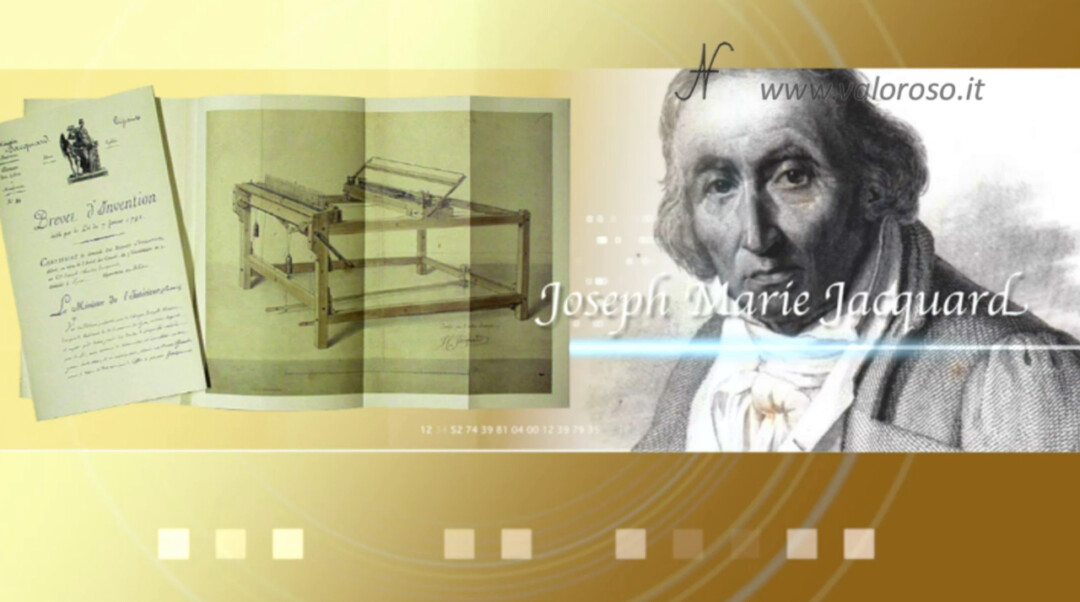
In this long process of research, to speed up the computing machines, we have seen the commitment of scholars, physicists, mathematicians and philosophers.
But, to make an important contribution to the development of computers and the history of the computer, will be a modest Lyon weaver: Joseph Marie Jacquard. He had the intuition to use punched cards for his frames.
The holes properly prepared on the boards, allowed to program the licci of the frame. The punched cards contained the work of the weavers, permanently. Each board reproduced a segment of the entire drawing by means of a series of perforations. The presence of the hole allowed to insert a certain thread into the warp, while the absence of a hole excluded the insertion of that thread.
The design to be reproduced on a drape was thus decoded on a series of punched cards, which were then joined to each other. In this way, the whole drawing on what we would now call tape was obtained. Jacquard, in 1801, managed to patent his loom. The Lyon weavers, fearing that innovation would put their work at risk, destroyed the loom and opposed its inventor in every way.
Despite the difficulties two years later, in 1803, he was recognized the importance of his work. Joseph Marie Jacquard was called to Paris, at the Conservatory of Arts and Crafts, with the task of continuing to perfect his project.

History of the computer, the pioneers
Charles Babbage
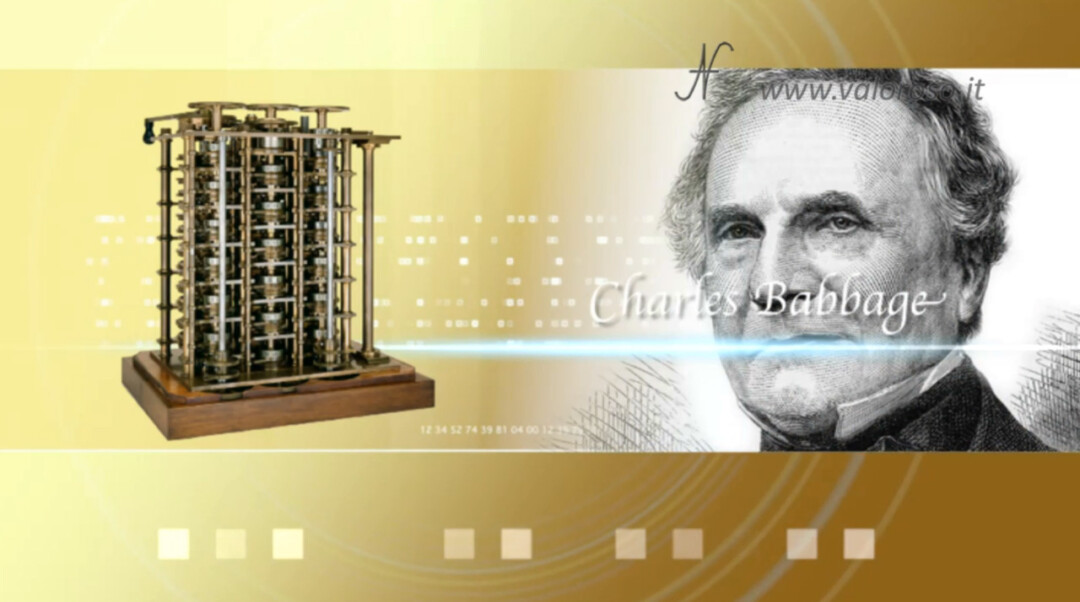
In the history of automatic calculation we now encounter a singular figure who was the first to have the intuition of the concept of the calculator: the English mathematician Charles Babbage. Extremely intelligent, full of brilliant ideas, he was successful in numerous fields of activity. He made the suggestion to identify navigation lighthouses by periodically hiding their light; simple but effective idea that can still be applied today.
He suggested simplifying the postal service by establishing a fixed port independent of the distance at which a letter was to arrive. A few years later Sir Rowland Hill introduced the stamp on these arguments. He invented the first speedometer, arguing that there should be one in the cabin of each locomotive. Babbage, like all the scholars of the time, made extensive use of the mathematical tables, and it was right in front of one of the latter, full of logarithms, which pointing with his finger, he said to a friend:
"I think all these tables could be calculated by machine."
Since then this brilliant man was possessed by the dream of building a machine capable of automatically carrying out any arithmetic operation. To this end he devoted the years from 1824 until his death in 1871.
Charles Babbage, to overcome the inaccuracies and errors of numerical tables, such as those of logarithms, built the prototype of a first machine that he called "Differential Machine". This project turned out to be so interesting that the British government granted him a loan of 1500 pounds that allowed him to continue the work. In 1824 the Royal Astronomical Society awarded him the gold medal.
Unfortunately, due to the inadequacy of the technologies of the time, and despite the commitment of its inventor, the machine was never completed. And, in 1833, the British government also revoked its funding.
However, Charles Babbage, with firm determination, continued his studies with the intention of designing and building a new machine capable of performing any arithmetic operation and of solving in principle every mentally conceivable arithmetic problem. He devised a second, much more complex machine: the "Analytical Machine" based on a punched card program. There, one could already recognize the fundamental parts of a modern computer.
Operation:

According to Babbage's design, the Analytical machine was supposed to consist of four fundamental sections:
Aarithmetic unit, which is the organ that performs the individual operations called "mill" or mill.
The central memory where the data resided called "store" or warehouse.
The input section composed of a card reader, inspired by those of Jacquard frames.
The output section for printing outgoing data.
The memory for the input numbers and for the intermediate results would consist of several columns composed of cogwheels that had ten positions, corresponding to ten decimal places. The data was transferred from the central memory to the arithmetic unit where one of the four arithmetic operations could be performed by a mechanical process. In each elementary instruction the number stored on one column could be combined according to one of the four operations with that of another column and the result placed on a third column. A program was then made up of a sequence of elementary instructions that specified the arithmetic operations to be performed on the initial or partial data. The whole calculation process, or rather the program, had to be encoded through the holes properly prepared on the punch cards. The latter were subdivided by Babbage into:
Card Number: where the holes represented the different digits of a number.
Variable Card: where the memory cells (i.e. a given column of wheels) were specified from which to take a numerical data to be processed or deposited after processing it.

Operation Card: where instructions for operating on the data were specified.
Babbage's computer architecture is therefore comparable to that of today's computers. In fact, we find the calculation unit or CPU arithmetic unit (Mill), the central memory unit (Warehouse) and the input and output units (punch cards and printing device) conceptually similar to modern Input/Output devices (keyboards and printers).
Being a very complex mechanism, Babbage made only a few parts of the analytical machine. Subsequently, he abandoned the project due to lack of funds. In addition to the few parts built, a detailed description has also been handed down to us by an Italian, Count Federico Luigi Menabrea.
It happened that Menabrea, scientist, expert in mathematical engineering and member of the Academy of Sciences of Turin, in 1840 listened to a series of conferences held by Babbage in the Piedmontese city in order to illustrate his projects and propagate in scientific and engineering circles the interest in calculating machines.
Luigi Menabrea was fascinated by Babbage's ideas and intentions. He collected, studied and reconstructed the ideas he heard. Two years later he published a report in French, "Notion sur la machine analytique de Charles Babbage" which is the best technical description we have left of the analytical machine.
The text a few months later was resumed to be translated into English and greatly expanded by Ada Augusta Lovelace (daughter of Lord Bairon), a talented collaborator of Babbage. According to the beautiful image given by Lady Lovelace, as the Jacquard loom weaves flowers and leaves, so Babbage proposed to weave algebraic designs to the analytical machine.
It is said that she herself proposed a "program" for calculating Bernoulli numbers with Babbage's machine. This earned her the title of the first programmer in the history of the computer. One of the newest programming languages is called Ada, in honor of Lady Lovelace. What, then, was the intuition that made Babbage famous?
The revolutionary idea was to conceive in the mid-800 the logical and functional scheme applied, more than 100 years later, to electronic computers and to foresee for the first time the use of punched cards. It wasn't until 1975 that floppy disks replaced punched cards. The analytical machine therefore represents for the 800 the culmination of man's intuition in the field of calculating machines.

Herman Hollerith, the history of the computer
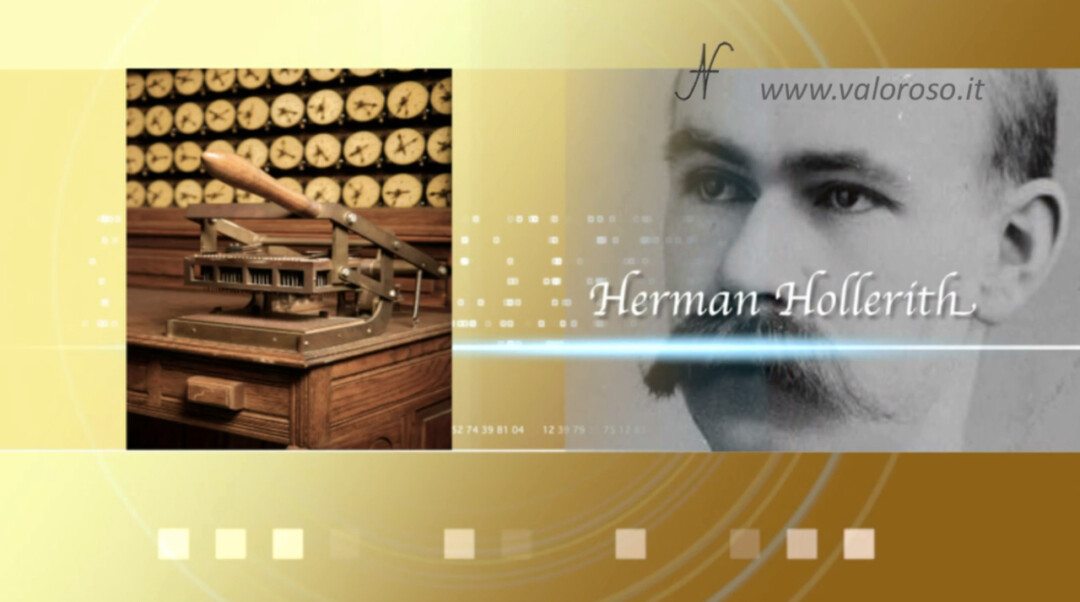
If Charles Babbage was the inspirer of today's electronic computers, Herman Hollerith was the inventor of traditional mechanographic machines. In the history of the computer, these two men begin the technique of data processing.
Already in the nineteenth century, the United States of America carried out the census of the population in a serious and meticulous way. However, the processing of the data took so long that a new census often had to be started without the examination of the previous one having been completed.
So it was that the American government, for the census of 1890, promoted research to find a system for the automatic processing of the collected data. The best idea came from the statistical engineer Herman Hollerith who had drawn up a tabular, not to specify the program, but the data to be processed.
He did not reuse Babbage's idea, but he had the intuition by observing a ticket agent piercing train tickets with his machine. Each punch card reported the data provided by each individual or household. Each forum represented a precise answer to a question in the census questionnaire. For example, the male or female sex of an individual was represented with a hole or the absence of a hole, respectively.
The latter could only be opened or closed and it was therefore logical to relate them to the digits of the binary system 1 or 0. Electromagnetic machines, designed by himself, were able to read these cards.
Operation:
It is interesting to describe how these "card readers" machines worked. In particular, a card was divided into 288 zones that represented personal data.
To decode this information, a device with a battery of retractable needles was superimposed on each board. In the absence of perforation, the cardboard stopped the needle. Otherwise, the needle would end up in a tub filled with mercury, closing the circuit (mercury is in fact a good conductor of electricity).

The current passed into a wire, operating a relay, which advanced one of the 40 meters by one click (the counters allowed to add the data of the various categories). Next to the reading and counting device, the operator had at his disposal a chest of drawers, called a "columner". A hole on the board closed a certain contact, automatically controlling the doors of the chest of drawers.
The operator, by inserting the elaborate card into the door automatically opened by the device, thus grouped the cards homogeneously. It was the first time that electricity had been used in the calculation.
A curious note is the format of the cards: they had the same shape as a dollar bill at the time, to facilitate deposits. The upper corner was cut diagonally. The main reason for the cut angle was to prevent the card from being inserted in reverse. If the card was inserted into the reader incorrectly, it hit a lever. This activated a micro switch and stopped the machine until the operator rotated the board correctly, as required by the system.
The device was a huge success; it was possible to examine up to 800 cards per minute (a fabulous speed for those times and impossible for men) and the result was amazing because it was possible to process, in a few months, all the data of 62 million Americans, saving the government 5 million dollars compared to the previous census of 1880 whose processing lasted 7 years. Hollerith, in 1896 founded his company: The "Tabulating Machine Company", one of the columns on which the most important and famous of computer companies would rise, after 28 years: The International Business Machine; IBM.
This is the first part of the documentary on the history of the computer, created by Davide Fornasiero of HistoryBit.